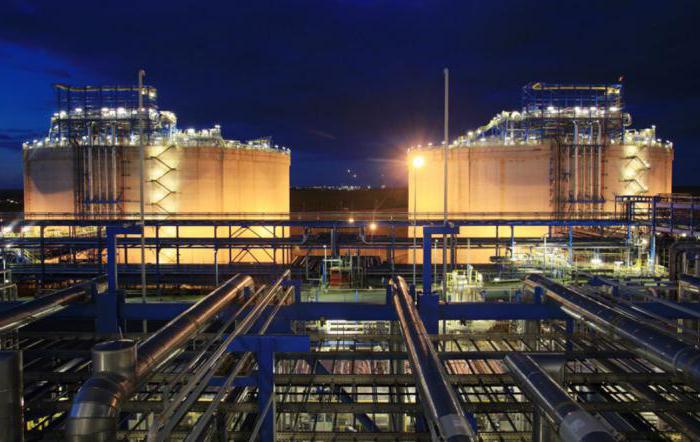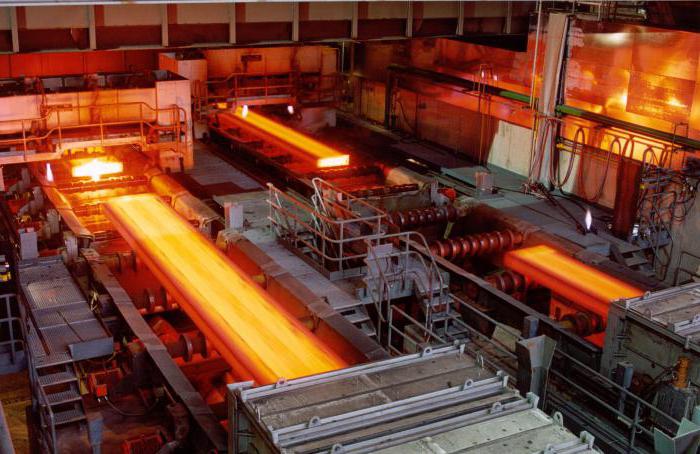In order to successfully influence economic processes, you must first understand them. Therefore, it makes sense to pay attention to gross domestic product, which is one of the key indicators of the decline or growth of the state economy.
What is GDP
Under the gross domestic product should be understood economic indicator generalizing type, which is used to express the total value of goods and services at market prices. And we are talking only about the products that were produced domestically using exclusively national capacities and resources in any sectors of the economy.
When calculating GDP, data on the value of intermediate products are not used. Gross domestic product is very important for economic processes, since without it it is extremely problematic to characterize the level of development, production results, growth rates, analysis of labor productivity, etc.
Real and nominal gross domestic product
Gross domestic product is nominal and real. The first, it is absolute, is expressed through current prices for a specific period for which the study applies. In other words, nominal GDP is an indicator that reflects the actual volume of services and manufactured products at prices valid for a given year.
As for the real gross domestic product, its expression occurs through the prices of the period defined as the base. Thus, real GDP indicates actual production growth, not price changes. The price index (deflator) of GDP can be obtained by dividing the nominal product by the real one. This indicator is relevant for determining price changes for a specific period.
So, we discussed what nominal GDP is and how it differs from real GDP. But this is not the whole classification, and therefore we go further.
Actual and potential GDP
Under the actual should understand the gross domestic product, which was recorded at a time when the economy was not in a state of full employment. It is used to determine the opportunities realized in the framework of state development.
Potential GDP in turn - this indicator is relevant for increasing the aggregate demand, at which employment can be characterized as full. It serves to express the potential of this type of economy. As a rule, they significantly exceed real indicators. The GDP gap can be obtained by subtracting potential opportunities from actual ones.

It is worth paying attention to the fact that GDP is an internal product, since it is produced by residents of the country. Residents should be understood as the private economic sector, regardless of citizenship and nationality. A product of GDP is called for the reason that its calculations are carried out minus the fixed assets that were used. The very process of using such funds represents a decrease in the cost of fixed resources over the period of time used to generate the reports. The reason for the decline is the depreciation, physical and moral obsolescence of resources.
GDP calculation methods
In order to determine the gross domestic product, you can use several methods:
1. On expenses.With this approach, the investment costs of companies, consumer spending by households, government spending on goods, as well as net exports and investments (imports are deductible) are summarized.
2. According to the amount of production. In this case, it is only necessary to summarize the addition of value from each firm (this refers to the type of margin that was created at a particular enterprise).
3. Income. The incomes of corporations, the population of the state (received from the activities of entrepreneurs, taxation of imports and production), as well as depreciation charges are summarized.

It is worth noting that the gross domestic product is able to have a significant impact on the monetary policy of the government and the Central Bank, as well as stock indices.
Features of potential GDP
A term such as potential GDP should be understood as the maximum possible level of gross domestic product, subject to the full use of all available resources (full employment). Speaking about the economy of full employment, we need to pay attention to the possibility of a certain resource reserve. This may include the natural level of unemployment.
The growth of potential GDP is directly dependent on the amount of available technologies and resources. Moreover, it is absolutely independent of the price level. That is why stable growth is implied in such calculations. One must also understand the fact that the influence of competition and the market can in the long run ensure output at the level declared by potential GDP. At the same time, any price level is allowed, which depends on the amount of money used in the economy.
If there is a high monetary emission, then a price increase will be inevitable, but the money supply is not able to influence the volume of production in the long run.
The value of potential GDP will grow provided that the amount of resources in the economy increases or the influence of technological progress manifests itself. But in the case of a decrease in the volume of funds, the result will be diametrically opposite.
GDP Impact Factors
There are many economists who agree that the long-term period in macroeconomics can be fairly accurately described using the classical model. The position of the classics was that if the actual GDP deviates from the potential, the market eliminates these changes.
But there is another point of view. Its essence is as follows: we can distinguish a short period (quarter, for example), within which the scheme of the classical principle of neutrality of money will not work. This means that a change in the money supply will affect not only the price level, but also the real GDP.

Based on this information, the following conclusion can be drawn: if the actual and potential GDP have a significant difference in performance (the first is significantly behind the second), then companies will be able to increase production at a given price level.
This conclusion is fully consistent with the actual reaction of companies to underloading the economy. In the event that a significant amount of resources is not involved, enterprises can choose the way to raise additional funds without raising the price level for them. An example is the unemployed who agree to work at any price offered.
This approach allows you to provide the company with the necessary amount of resources without increasing the cost of production factors.
Change Cycle
When considering potential and real GDP, it is worth paying attention to cyclical changes in the economy. According to one of the most popular positions, there is an economic cycle that includes periodic fluctuations in the levels of production, inflation and employment.As the reasons why this cyclicity arises, we can determine the weakening of the effect of animation, the depletion of autonomous investments (periodic), the renewal of key capital goods, fluctuations in the money supply, etc.
Since macroeconomics does not use the integral theory of the economic cycle, in most cases the emphasis is on the specific causes of cyclicality, but they are not considered in the complex. But many experts believe that the formation of the level of total expenditures is due to the indicators of production and employment. At the same time, seasonal fluctuations in activity in specific areas (construction, agriculture, etc.) are not taken into account.
As the main phases of the economic cycle, you can determine the decline and rise. It is in the process of these periods that a deviation from the average economic indicators of dynamics is recorded.
Oaken's Law
Considering such an indicator as potential GDP, attention should also be paid to the level of natural unemployment. Lack of the right amount of jobs is a natural part of the labor market. Moreover, this process can be described as complex, since it has a tangible impact on the formation of the workforce in the country.

The essence of the work of the American economist Arthur Ouken comes down to identifying the relationship between the lag in GDP and the lack of the right number of offers on the labor market. According to this theory, gross domestic product is sensitive to level changes. cyclical unemployment. Potential GDP and Oaken's law have a logical relationship: the higher the unemployment rate, the less noticeable the difference between the actual gross domestic product and the possible.
This coefficient is used as an indicator by which the general state of the economy is determined, as well as the level of its effectiveness.
If we talk about the observed and actual level of unemployment, it is worth noting that they are not equal. As part of the economic downturn, a significant lack of free jobs can be observed, with the result that actual unemployment is higher than the natural level. When the economy is in a state of dynamic growth, the demand for labor increases so much that the percentage of those who leave production reaches a minimum. At the same time, the number of unemployed who are able to find a job significantly exceeds the average value. The difference between natural and actual unemployment is called opportunistic.
It is worth noting the fact that, according to Oaken's law, the effects of cyclical unemployment can take on disastrous proportions, affecting indicators such as nominal, real and potential GDP. We are talking about reducing production growth, leading to a depressed state and inaction of citizens. The result of such processes is the downgrade and even loss of skills.
In addition to these disadvantages, unemployment leads to serious economic costs: due to the lack of ability of enterprises to provide the required number of jobs, the level of possible production of goods and the provision of services is significantly reduced. Thus, the key loss of companies with high unemployment is products that have not been released.
The actual level of GDP is equal to potential if the level of production is minimal, and the maximum resources are involved in the production of goods and services.
Business cycle
This term should be understood periods of recession and boom, which are periodically repeated in the framework of overall economic growth. As a reason for this cycle, we can identify fluctuations in aggregate demand. Investment demand also has a significant impact on changes in macroeconomic indicators.

In assessing the cyclical nature of the economy, potential GDP is of great importance, the formula of which is reduced to the sum of the impact of factors such as the maximum amount of real output and the most efficient use of all available resources over a specific period of time.
At the same time, it is important to understand that the level of potential gross domestic product will be the higher the actual, the lower will be the indicators of aggregate demand relative to possible economic growth. If it grows significantly, then the actual GDP may reach the potential level, but in any case it will not rise above it.
Business Cycle Phases
Fluctuations in the process of economic growth can be divided into certain phases, which are periodically repeated:
1. Depression. We are talking about a rapid decline in aggregate demand, with which GDP is also rapidly falling. As a result, there is an increase in unemployment, leading to the achievement of economic indicators of the lowest point of the cycle. It is worth noting that the lowest point of the country's economic level is impossible without the influence of depression.

2. The rise. This is an increase in aggregate demand, combined with an increase in GDP and an expansion of the labor market.
3. The boom. This phase implies a period during which aggregate demand able to reach a maximum and exceed the potential GDP as it approaches the peak. The formula for this phase boils down to the sum of factors such as excess demand, a significant decrease in unemployment, and subsequent inflation.
4. The recession. This period immediately follows the boom. Initially, there is a decrease in aggregate demand, entailing a gradual decrease in gross domestic product and an increase in unemployment. As aggregate demand shrinks, so does depression. The key factor that distinguishes recession from depression is a constant price level.
Inflation
This term is used to define a rise in price levels across a country that lasts for a given period. In other words, there is a decrease in the purchasing power of the national currency. The depreciation of money is measured in an indicator such as the rate or rate of inflation.
It is also worth paying attention to demand inflation. A similar phenomenon is the result of an increase in aggregate demand when a potential level of real gross domestic product is reached. As for cost inflation, in this case it makes sense to talk about the consequence of rising prices for resources. When the cost of funds used in production increases significantly, enterprises raise product prices, thereby hoping to maintain the same level of profit.

As you can see, such an indicator as potential GDP and the factors associated with it play an important role in the process of assessing and forecasting the state of the state’s economy.

Rather, the opposite.